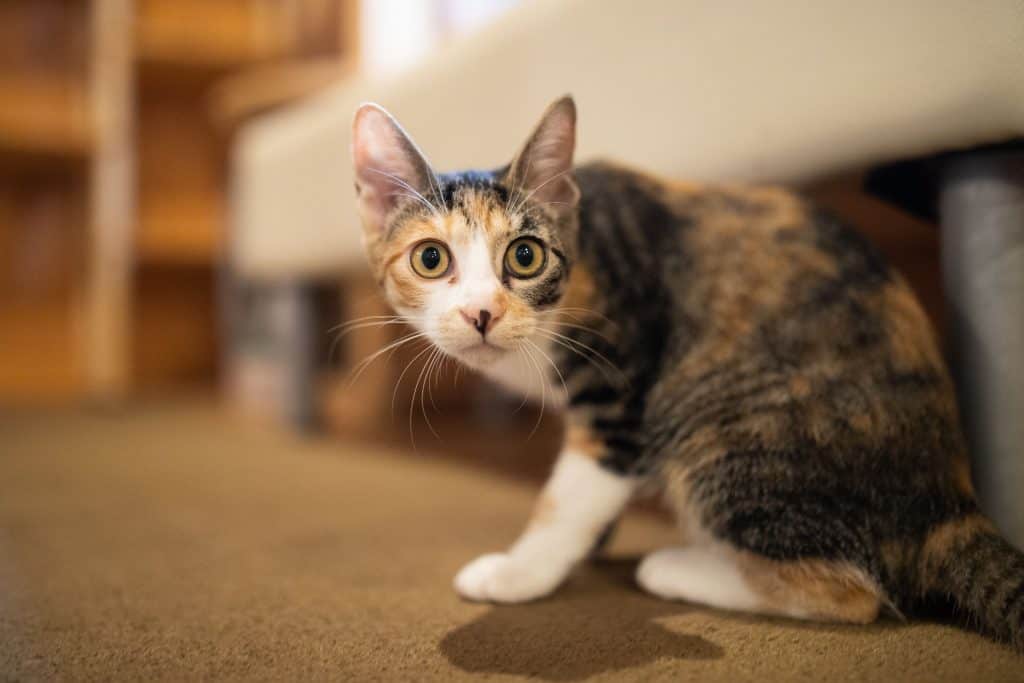Interpret Cat Body Language, Earn Trust
Interpret Cat Body Language, Earn Trust

Cats are beloved by people worldwide and have been for millennia. But that doesn’t mean they are fully understood. Generally speaking, cats are on the mysterious side and they leave us guessing about their emotions or states of mind. Cats can also be incredibly shy or timid; we’ve all heard the phrase “scaredy cat.” The good news is that we can communicate with them by acknowledging and untangling cat body language.
Pass the Test
It can take a significant amount of time for cats to warm up to certain people, and even if they do relax eventually it might not ever become a loving, cozy, snuggly relationship. Every cat is unique and has individual needs. However, you can determine how a cat feels based on cat body language.
Potential Roadblocks
There are lots of exceptions out there, but as a group cats are not always immediately friendly or outgoing to those they haven’t met. They are profoundly attached to specific areas, and if they perceive any threats in or to their territory, they may react in unmistakably feline style.
Also, a lack of absence of proper socialization early on or severe trauma can cause fear and doubt. These cats aren’t impossible friends by any means, but they will likely benefit from consistent, dedicated coaxing. Separation anxiety or fear are concerning but can be addressed with expert care and guidance.
The Environmental Factor
Cats enjoy quiet, stable environments in which they can sort of predict or anticipate events. A laid-back, low-key household is great for many cats. Too much action and noise may send kitties racing for a place to hide. If you notice that your cat prefers hiding, it may be worthwhile to have them examined.
Always keep food and water bowls, their litter boxes, and favorite sleeping spots in quiet corners of the house. Other helpful tips for earning your cat’s trust include:
- Maintaining a daily routine
- Never forcing them to engage
- Using soft vocal tones
- Offering tasty, healthy treats when they show interest or curiosity
- Playing with them without getting too close
- Experimenting with various toys or teasers
Key Elements of Cat Body Language
It is crucial to learn how a cat appears when they are happy, playful, scared, aggressive, or defensive. They provide signals, and it’s up to us to apply them and change our behavior to help them feel safe.
- A happy cat will show a vertical tail, alert eyes, close contact, and pur.
- When defensive, they will cower, tuck their tail, avoid eye contact, and position themselves near an easy escape. You might see dilated pupils.
- An aggressive or territorial cat will puff up their fur to look larger. They may whip their low-lying tail from side to side, hiss, growl, show teeth, or lurch toward perceived threat. Look at the ears and eyes, which will be pinned back and pupils constricted.
Once you are able to make your cat feel safe, protected, respected, and valued, we’re pretty sure you might be well on your way to offering belly rubs very soon.
If you have any questions or concerns about feline behavior in general or cat body language, please call us at (705) 223-3404. Parkside Animal Hospital is here to help your cat thrive!
